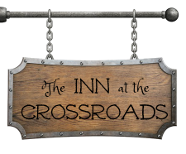“The Old Bear was particular about his hot spiced wine. So much cinnamon and so much nutmeg and so much honey, not a drop more. Raisins and nuts and dried berries, but no lemon, that was the rankest sort of southron heresy…” -A Clash of Kings
Thoughts:
The medieval recipe produces a hearty mulled wine, rich in spices. It is heavy and strong, without the sweetness of modern mulled wine, and might not be quite as universally palatable. That said, if you are making wine to serve out of doors on a cold winter night, this is the more warming of the two recipes.
The modern recipe produces a delicious hot wine that, while spicy and rich, is medium bodied and easy to drink. The sweetness of the honey and cane sugar combines brilliantly with spice of the fresh ginger; the result is an arresting tingle that floods the palate, without compromising the other flavors.
Bottom line? Modern if you are throwing a party, medieval if you are planning to walk The Wall at night.
(Guest review written by Firepony)
Medieval Mulled Wine Recipe
Cook’s notes: Don’t be afraid to meddle with the proportions to suit your taste. The amounts of honey, and ginger are negotiable. If you find that you’ve added too much ginger, you can add a fruit juice (“rankest of southron heresy” that it is), to balance out the flavor. The best method for adding fresh ginger is to crush it in a garlic press to release the juices. Sugar can also be added, to make the wine more drinkable for those who are not enduring freezing temperatures. Adding sugar and fruit juice make the wine more similar to the modern recipe, but are great for salvaging a batch of wine that is just a little too authentic.
ORIGINAL RECEIPT:
5. Potus ypocras. Take a half lb. of canel tried; of gyngyuer tried, a half lb.; of greynes, iii unce; of longe peper, iii unce; of clowis, ii unce; of notemugges, ii unce & a half; of carewey, ii unce; of spikenard, a half unce; of galyngale, ii unce; of sugir, ii lb. Si deficiat sugir, take a potel of honey. – Curye on Inglish: English Culinary Manuscripts of the Fourteenth-Century
Our Changes: This is a medieval recipe for hippocras, which is also mentioned in the books. Since both are a hot spiced wine, we decided to bundle them into one post. To match the Old Bear’s hot spiced wine description, we dropped the white pepper, and added raisins, cranberries, and almonds. This made it more like the Scandinavian hot wine concoction “Glogg”.
Ingredients:
- 1 bottle of an inexpensive red wine- sweet works better than dry. (Cabernet is good.)
- 1/2 cup honey
- 1 Tbs. each of ginger, cinnamon, cardamom, clove, nutmeg
- Handful each of dried cherries, raisins, and almonds (slivered or sliced is best)
Bring the wine and honey to a simmer. Taste for sweetness and add honey as necessary. Remove from heat, stir in spices, and continue to stir occasionally. After sitting, the spices will create a thick residue which will settle to the bottom. Using a ladle, serve into individual mugs or other heat-safe vessels. Consider putting the cloves in a mesh tea ball, or cheese cloth, to avoid picking cloves out of your goblet.
Fun Fact: Ypocras was a very popular Medieval beverage, and many different directions for preparation still exist. Also called Hipocras, the drink is named after the famous physician Hippocrates.
Southron Mulled Wine
Our modern recipe is only really modern in the sense that it is still made today. The recipe comes from the chaplain’s wife at a top British University, and while the specifics are a closely guarded secret, the basic ingredients are roughly the same as the medieval recipe above. However, this recipe has no nuts and berries, and calls for one part orange juice per two parts wine. The juice helps cut the acidity of the wine, and lends the mulled wine a sweetness not solely derived from honey. The citrus juice, coincidentally, makes the wine in keeping with the “southron” recipes alluded to by the Old Bear. This is much less trouble to make than it appears to be:
- 2 bottles of red wine (Shiraz and Cabernet work well)
- 750ml pulp-free orange juice (1/2 as much orange juice as wine)
- 1 Tbs. cinnamon and 2 cinnamon sticks
- 1 Tbs. nutmeg
- ~3 1″ cubes of fresh ginger. Crush these into the wine using a garlic press.
- ~3 tablespoons of honey
- 3-6 heaping tablespoons of cane sugar (or white sugar)
- 2 clementines, halved. (or 1 small orange)
- 1/4 of a fresh lemon, squeezed over the pot. (Optional, but don’t substitute lemon juice from a bottle.)
- 12-20 cloves. These should be inserted stem first into the rind of the clementine so that only the buds protrude. (You may need to pierce to flesh of the clementines with a small knife in order to insert the cloves.) Float the clementines in the wine, rind down, so that the cloves are in the wine.
- 1/2 shot of brandy, cognac, or armagnac (optional, but adds a pleasant kick)
Add all of the ingredients and bring the mixture to a simmer, but DO NOT BOIL. Stir it with a whisk often. Once it simmers for 5 minutes or so, reduce the heat such that the wine is kept just below a simmer. Heat for 45 minutes and serve with a ladle.
NOTE: The clementines make delicious boozy treats for the lucky guests still around when the wine runs out.

